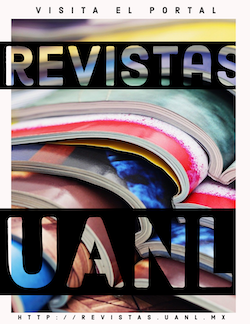Learning organizations: Private high school level
DOI:
https://doi.org/10.29105/rinn13.25-5Keywords:
Change, high school, individual and organizational learning organization, Leadership, TeamworkAbstract
To convert an educational institution, such as the private high school, an organization that learns, we must know the school, their strengths, opportunities, to support change, threats, weaknesses that impede it, starting from the individual learning to organizational, because both have an impact on a learner organization, involving all elements such as leadership, work in equipment, resources, culture and values that they make and provide structure, as well as the context in which this immersed; the process of internal learning which characterized them and provide scaffolding, of the new acquisition that they help you or in the future helping you to become the type of organization that not only will be able to adapt to the demands of a modern and dynamic society, but also to transform to generate meaningful learning, allowing it to be competent permanent and relevant to developing its capacities and the survival skills.
Downloads
References
Antúnez, S. (1994). La autonomía en los centros escolares, factor de calidad educativa y requisito para la innovación, Revista de Educación, 54(304), 81-112.
Argyris, C. (1993). Cómo vencer las barreras organizativas. Madrid: Díaz de Santos S.A.
Blanchard, K. (2007). Liderazgo de máximo nivel. Barcelona: Garnica.
Bolivar, A. (2000). Los centros educativos como organizaciones que aprenden: promesas y realidades. Madrid: La Muralla.
Gairin, J. (1999). Los departamentos y equipos educativos como órganos de desarrollo profesional, Revista de Currículo y Formación del Profesorado, 3(1), 85-114.
Garvin, D. A., Edmondson, A. C. & Gino, F. (2008). Is yours a learning organization? Harvard Business Review, 86(3), 109-116.
Garvin, D. A. (1993). Building a learning organization, Harvard Business Review, 71(4), 78-91.
Gutiérrez, H. & De la Vara, R. (2003). Análisis y diseño de experimentos. Cd. de México: McGraw Hill.
Leithwood, K. A. (1992). Transforming leadership. The move to toward transformational leadership. New York: Educational Leadership.
Mongomery, D. (1996). The MSI business/academic partnership, the research priority process, and the data Imperative. MSI Review.
Rodríguez, J. M. & Trujillo, J. C. (2007). ¿Las universidades son organizaciones que aprenden adecuadamente? Universia Business Review, 4(15), 100-119.
Ronquillo, J. L. (2006). Administración básica de la empresa familiar. Cd. México: Panorama.
Schein, E. H. (2003). On dialogue, culture, and organizational learning. Reflections, 4(4), 27-38.
Tintoré, E. (2010). Cómo conocer el estado del aprendizaje organizativo en las universidades. Revista de Universidad y Sociedad del Conocimiento, 10(2), 130-148.
Woolfolk, A. (2006). Psicología educativa. Cd. México: Pearson Educación.
Sandoval, L. Y. (2008). Institucion educativa y empresa. Dos organizaciones humanas distintas. Barañáin: Ediciones de Universidad Navarra S. A.
Downloads
Published
How to Cite
Issue
Section
License
Copyright (c) 2017 Innovaciones de Negocios

This work is licensed under a Creative Commons Attribution-NonCommercial-ShareAlike 4.0 International License.
The InnOvaciOnes de NegOciOs magazine is a free and open access electronic magazine of a scientific-academic nature and is a publication of the Autonomous University of Nuevo León, in which the authors retain their copyright and grant the magazine the exclusive right to first publication of the work. Third parties are allowed to use the published content, as long as the authorship of the work is acknowledged and the first publication in this journal is cited.
For more information, please contact the Research Secretary (FACPyA) of the Autonomous University of Nuevo León. Telephone: (81) 1340-4430. Email: revinnova@uanl.mx










